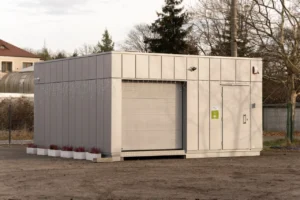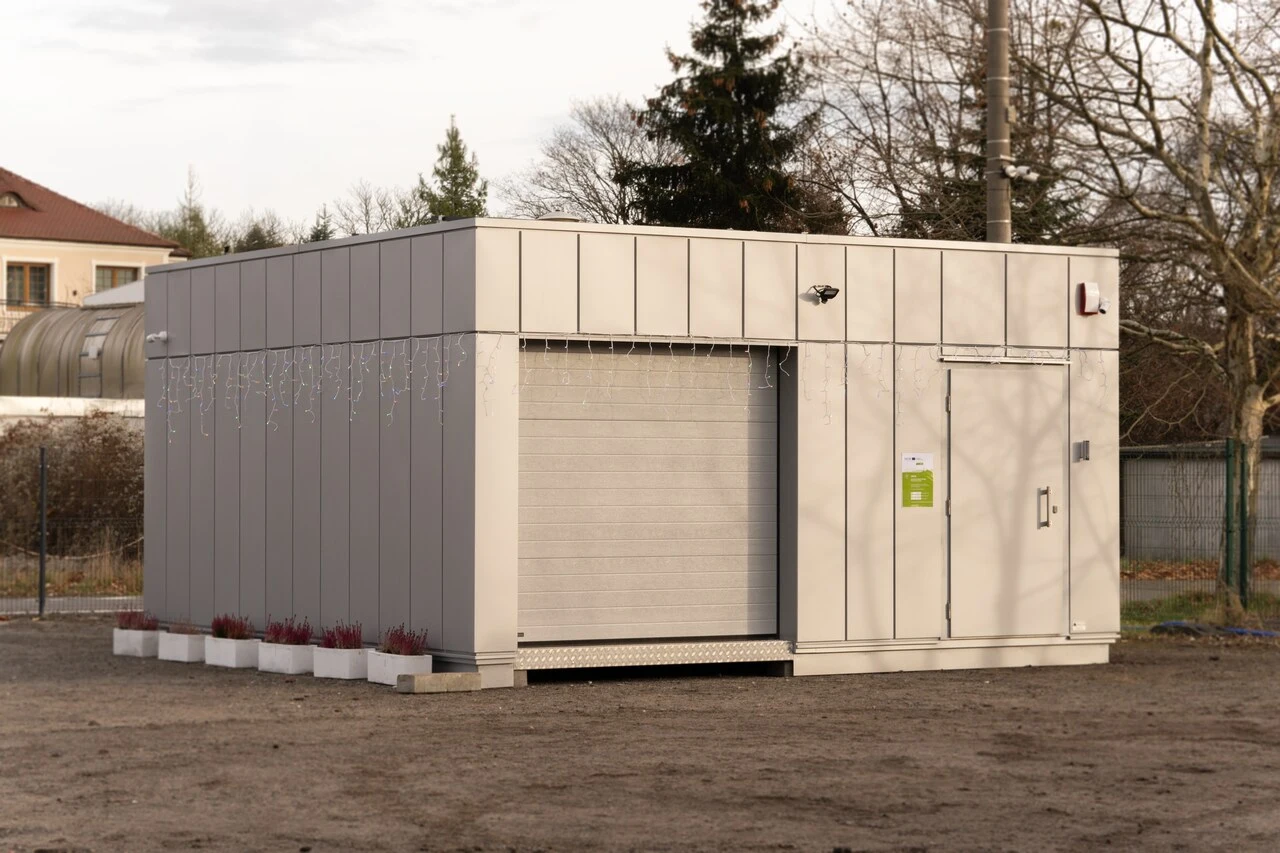Poland’s first freestanding reloading microhub has been operating since December in Poznań. It is a place from which bicycle messengers will pick up parcels brought in by car. This pilot project will last until spring.
The microhub was created as part of the GRETA research project implemented by Łukasiewicz – Poznań Institute of Technology together with partners from six EU countries. Its goal is to test eco-friendly solutions for urban freight transportation. In Poznań, the test includes a reloading microhub that was built on Puławskiego Street. It is located on the outskirts, but in a well-connected place.
It is a purpose-built small building, made of recycled materials, powered by photovoltaic panels and properly equipped. Four electric cargo bikes are stationed there.

How does the microhub work?
Shipments from the logistics center to the microhub are brought in by vans. At the hub, packages are reloaded onto bicycles and further delivered to recipients in the central districts of Poznań. One bicycle takes about 40-45 small parcels (which account for half of all shipments) and can cover a route of 15 to 20 km.
The last stage of delivery, that is, getting the parcel to the customer, is most costly and least environmentally friendly. Courier companies have long been implementing solutions to make the so-called last mile less carbon-intensive.
The microhub pilot will last about five months. During this time, all small shipments that GLS Poland delivers to residents of downtown Poznań will pass through it. Larger ones will be delivered by car.
The Poznań microhub is a joint venture between the City of Poznań, GLS Poland and Łukasiewicz – Poznan Institute of Technology. It is the first of its kind in Poland.
Microhubs operate in many European cities, taking a variety of forms. They can be operated by one or several logistics companies. They can be used only for transshipment and bicycle storage, or as a pick-up point for the customers.








